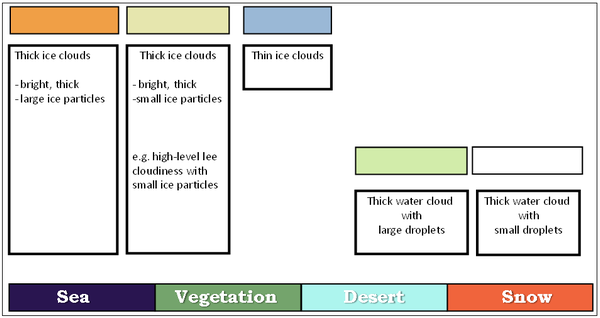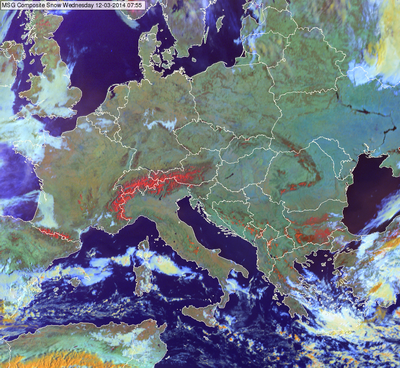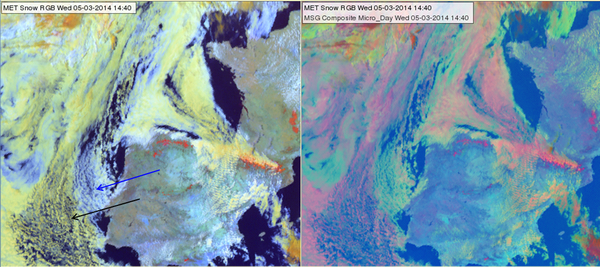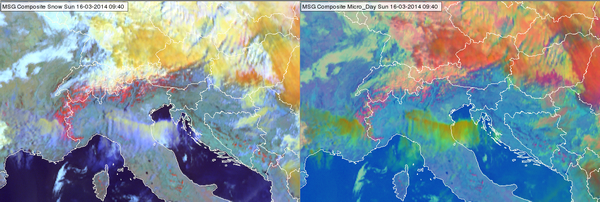Typical Colours of Snow RGB
Water clouds are bright in all three components. Ice clouds are bright in the red one, gray in the green one and dark in the blue one. Snow cover is bright in the red component and dark in the green and blue ones. As a consequence the following colours will be typical for surface and cloud features (see Fig. 5):
- water clouds - white
- thick ice clouds - orange
- snow - red - orange
- vegetation - greenish
- desert - light blue
- sea - dark blue
- thin ice clouds - the colour depends on the colour of the underlying surface (sea, land or cloud) as well. For example, it could be pale bluish over sea or light yellowish over water clouds
| Figure 5: Typical Colours of Snow RGB (Source: Jochen Kerkmann, MSG Interpretation Guide, EUMETSAT) |

|
Several colours of the snow RGB are close to the natural colours: most of the water clouds are whitish, land is greenish and sea is dark blue (Fig. 6). There are also some non-natural colours: thick ice clouds are orange, snow is red-orange and the desert is bluish.
| Figure 6: Snow RGB for 12 March 2014 at 07:55 UTC |

|
Note that the colour of the clouds depends slightly on the cloud top particle size as well, because the reflectivity of the clouds depends on their cloud top phase and particle size both in NIR1.6 and in NIR3.9 channels. Water clouds with large particles or ice cloud with small particles may have similar colours - pale yellowish green. Water clouds with big particles are depicted in a light greenish yellow, while water clouds with small particles appear white (see left panel of Fig. 7). The right panel of Fig. 7 shows the corresponding Day Microphysics RGB image.
| Figure 7: Snow RGB (left) and Day Microphysics RGB (right) for 5 March 2014 at 14:40 UTC. The blue and black arrows indicate water clouds with small and large particles, respectively. |

|
Ice clouds with big particles are orange, while ice clouds with small particles are light/pale yellow (with some greenish tones). Fig. 8 shows high-level lee clouds south and southwest of the Alps. High-level lee clouds typically consist of very small ice crystals.
| Figure 8: High-level lee clouds with small ice particles in the Snow RGB (left) and Day Microphysics RGB (right) south and southwest of the Alps for 16 March 2014 at 09:40 UTC |

|